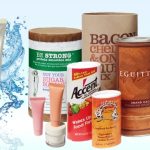A bottled and jarred packaged goods is a type of packaged food product that has been processed and packaged for sale in either glass or metal containers. These containers can be bottles or jars, depending on what the product is.
For example, a jar of jam is wrapped and stored in a metal or glass container.
What are Bottled and Jarred Packaged Goods?
As a result of the increased demand for packaged goods, jars and bottles have been developed to preserve food. These jars and bottles are made from glass, metal, plastic or paperboard. The jars and bottles are then filled with food items such as jams, jellies, sauces, oils or pickles. And sold to consumers.
The purpose of the jar or bottle is to ensure the food is kept in a sterile environment. The containers are then poured into a pot of boiling water, which kills any bacteria and other microorganisms that may be on the surface of the jars and bottles. Hot-water sterilization is used for canning vegetables, fruits and meats.
Also Read: What are Boxed Packaged Goods and How to Store them Properly?
What is the Difference Between Bottled & Jarred Packaged Goods?
There are two main types of packaged foods – bottled and jarred items. Though both have their own advantages, there is still a difference between them. Bottled items come from factories while jarred items come from packaging companies or companies that sell them in stores for home use such as Walmart or Amazon.
Jarred goods are products that are packaged in jars and bottles. These types of packaged goods were first introduced during the 1800s and were a popular choice for food preservation. Jarred items are foods sold in jars or other containers. These foods typically include recipes, ingredients, and instructions for cooking with the food
Bottled goods, on the other hand, are products that have been processed in a factory and then bottled. These types of packaged goods were first introduced during the 1930s, when they became popular as an alternative to canned foods. Bottled items such as salad dressing and juices are usually made by factories, but require a company to package them for sale.
Also read: Bagged Packaged Goods- Why To Choose, Advantages & Disadvantages
Types of Bottled and Jarred Packaged Goods?
Bottled and jarred packaged goods are usually used for food and beverages. They are also used in the manufacturing industry for a variety of products. The types of materials that are used to make these products can vary depending on the product’s function.
There are many types of materials that can be used to make these products, including plastic, glass, aluminum, and steel.
Plastic Bottles:
Plastic is a type of thermoplastic polymer, which means it is made from polymers that change their shape when heated or cooled. It is a versatile material that can be molded into any shape.
These bottles come in different shapes and sizes depending on what they are used for – from water, juice, sports drinks to beer and soda. They are lightweight, durable, shatterproof and recyclable. Generally speaking, they are cheaper than glass bottles because they don’t have as much weight or thickness as glass does.
Glass Bottles:
Glass bottles are made by blowing rock or sand out of a furnace, then heating the glass and shaping it into whatever object it will become. Unless you’re very careful, you could break the bottle by dropping it. Glass bottles are recyclable.
Aluminum
Aluminum is a common material used in the packaging industry. It can be used to create both lightweight and durable, cost-effective structures. However, aluminum is a relatively weak material that can easily be damaged when exposed to certain chemicals, heat, or other elements.
The aluminum foil used in food packaging is often made by taking a thin sheet of pure aluminum and wrapping it around a lighter-gauge paper.
Steel
Steel packaging containers are commonly used to package goods at the manufacturing level. These containers can be made of a variety of materials such as aluminum, stainless steel and more. They are usually delivered to the customer in their original packaging and they require no further processing. before they are shipped. These containers are commonly used to package and ship liquids and food products
Also Read: What Are Tubed Packaged Goods- Types, Advantages & Use Cases?
How to Store Your Bottled & Jarred Foods Properly to Ensure Freshness
What you should know about storing your food
- The best place for storing food is in a cool, dark, and dry place. The best time to store food is during the colder seasons.
- Do not store your food in the refrigerator or freezer. These places are too cold for proper storage of perishable foods.
- Use a Ziplock bag for storing food in the refrigerator.
- Put all perishable foods in a plastic bag or wrap them in newspaper and store them in the fridge.
- Try not use glass containers for storing any kind of food. If we careless it may break.
- Keep your packaged goods tightly sealed and avoid opening them too often or too much.
- Use a vacuum sealer to make sure that they last longer than if you did not use one Keep your jars sealed with lids tightly closed by using a canning jar lifter
How to Store your Bottled & Jared Foods Properly for Maximum Shelf Life
For maximum shelf life, it is recommended to store your bottled and canned food in a cool, dry place. Keep the cans and bottles away from direct light. The storage space should be kept clean and free of any debris or dust. If you have a can opener, ensure that the lid is sealed properly before storing it. In a cool, dry place.
The best way to avoid food spoilage is by storing the food in sealed containers and using within seven to 10 days after opening. Maintaining the temperature of your refrigerator between 40°F and 50°F will prolong the storage life of your canned or bottled foods.
Also read: How to Navigate to the closest grocery Store for your Shopping Trip
What are the Pros and Cons of Bottled and Jarred Packaged Goods?
Many consumers are now opting for bottled and jarred packaged goods because of the convenience they offer. However, there are many cons to these types of packaging that can be detrimental to the environment.
Pros of Bottled and Jarred Packaged Goods
The advantages of using bottled and jarred packaged goods over regular shopping include:
- bottled and jarred packaged goods include convenience, portability, protection against air and light, and reduced risk of contamination.
- Less risk of food poisoning from eating out of the package;
- Less waste from packaging;
- No need for refrigeration;
- The package is easier to store than a lot of groceries.
Cons of Bottled and Jarred Packaged Goods
The disadvantages of using packaged goods are environmental:
- More packaging is required, which uses more resources and generates excessive waste;
- Some Packages require refrigeration, which uses up natural resources and releases carbon dioxide into the atmosphere.
- The cons include environmental impact, waste disposal and health concerns.
- Environmental impact: the packaging of bottled and jarred goods is significantly more wasteful since it is not biodegradable.
- Waste disposal: while it may be possible to recycle certain types of packaging, this can be a costly process that requires specialized machinery.
- Health concerns: some people are concerned about the potential risk with food stored in plastic containers such as BPA exposure.
Also Read: How to Send a Snap with the cartoon face lens in Snapchat
How to Choose the Right Brand for Your Needs
Packaging plays a huge role in marketing and the sales of a product. Packaging is what makes a product stand out from the rest, whether it is its shape or color. Companies spend loads of money on their packaging designs to make sure that their branding is on point.
In order to choose the best packaging company for your products, you will need to know what types of packaging work best for your brand. The first thing you will need to do is to choose what type of packaging material you would like your product to be packaged in. There are many different types of packaging materials, from paper and cardboard boxes to plastic boxes.
If your product is a liquid, it will normally be packaged in a translucent bottle. For example, if the product was a shampoo or conditioner that comes in a variety of colors for different hair types, then the bottle would contain all of these colors at once.

Techspurblog is a blog dedicated to providing industry-leading insights, tips, tricks and tools on topics such as web design, app development, Digital Marketing, Education, Business and more. We also provide reviews of the latest tech products and services that can help you get the most out of your business.






